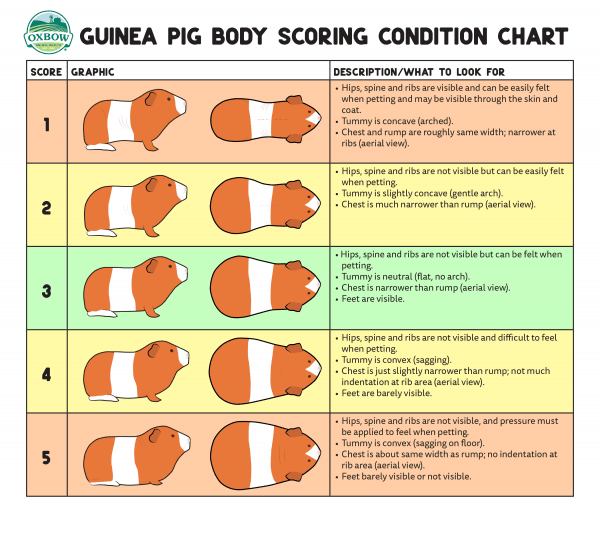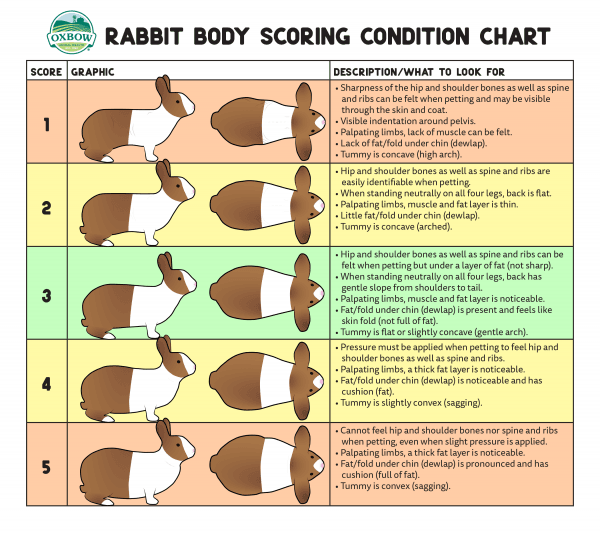As pet parents, we want to give our furry friends everything their hearts desire. Sometimes it can feel next to impossible to look into those soulful little eyes and abstain from handing out another treat or adding a few more pellets to their food bowl. Unfortunately, obesity is as common in the animal kingdom as it is in humans and can lead to just as many serious health concerns. Though you can certainly indulge your little one from time to time, it’s important to provide a healthy, well-balanced diet and plenty of opportunities for physical activity in order to avoid the risks associated with excessive weight gain.
Why Is Obesity So Dangerous?
The dangers of obesity are far more substantial than just carrying around a little extra weight. Obese and overweight pets are more prone to a myriad of serious health concerns. Treating these issues themselves can be very difficult unless the root cause (obesity) is addressed. The following conditions are some of the most common obesity-related health implications seen in small mammals, but it is not an all-inclusive list.
If you’ve noticed your furry family member is gaining a bit of excess weight, if they’re showing any abnormal signs (decreased appetite, decreased or excessive thirst, lethargy, decreased grooming, decreased or increased urinary output, abnormal fecal output, etc.), or if you’re worried your little one may have one of the following health conditions, make an appointment with an exotics veterinarian as soon as possible for a thorough examination.
Diabetes
Though more common in some species of exotic companion mammals than others, Diabetes Mellitus is a dysfunction of the pancreas. The pancreas is a specialized organ that secretes insulin into the blood to control blood glucose (blood sugar) levels. If the pancreas is unable to perform this task properly, blood glucose levels will be consistently elevated and may lead to many of the same ill effects seen in diabetic humans. Luckily, diabetes can often be reversed in small mammals through weight loss and maintaining a healthy, well-balanced diet.
Liver Disease
The most common liver ailment facing obese small mammals is Hepatic Lipidosis (also known as Fatty Liver Disease) and is caused by excessive fat accumulation in liver cells, impeding overall liver function. The onset of this condition is often rapid and can quickly become life-threatening.
Heart Disease
Just like overweight humans, an obese pet’s heart must work much harder than that of their healthy-weight counterparts. Though some pets are sadly predisposed to heart-related health concerns regardless of their weight, even a little bit of excess weight can exacerbate an underlying cardiac condition.
Painful Feet
One of the most common foot concerns noted in obese small mammals is ulcerative pododermatitis, more commonly known as “bumblefoot.” This painful condition is caused by consistent pressure being applied to the skin and soft tissues between the bones of the feet and a hard and/or abrasive surface. If enough pressure is applied, the delicate skin and tissues in the foot can begin to die, resulting in sloughing, ulceration, and secondary bacterial infections. If left untreated, this condition can necessitate amputation. Making sure your little friend remains active and a healthy weight can help prevent this condition entirely.
Arthritis
Arthritis can happen to any species and at any age. Though we often associate arthritis with older animals, young pets can develop arthritis as well, especially if they are obese. The excessive weight puts additional strain on joints, leading to painful damage and deterioration, and can substantially impact your pet’s ability to get around and properly groom themselves.
Respiratory Issues
In an obese animal, fat can accumulate in any area of the body. Fat that builds up within the thoracic cavity (chest) can put pressure on the lungs. This pressure often results in an increased effort to breathe and may lead to respiratory distress, which could prove life-threatening.
Bladder Concerns
As discussed, obese animals tend to live a sedentary lifestyle. Through normal daily activity and play, a healthy small mammal will “shake up” the contents of their bladder and stimulate frequent urination. Obese animals, on the other hand, tend to be sedentary, resulting in urine that sits in the bladder too long, which can increase the risk of bladder sludge formation or lead to a urinary tract infection or other urinary health issues. If you pet is suffering from urinary health issues currently, make an appointment with your veterinarian to discuss a treatment plan. Part of this treatment plan could include Natural Science Urinary Support.
Improper/Decreased Grooming Habits
Overweight pets have a difficult time grooming themselves. While they may still be able to reach some parts of their bodies, they are often unable to properly clean their hind end, which can result in urine scald (a condition in which an animal is unable to clean the urine from their fur resulting in burns to the skin on or around the genitals and back feet/legs) or an accumulation of feces that gets trapped in the fur around the rectum. If urine scald or fecal matts are unnoticed or left untreated, they can result in serious skin infections and can even invite flies to lay their eggs in the dirty areas.
Inability to Reach Cecotropes
Cecotropes contain a large diversity of essential nutrients and healthy microorganisms that are naturally shed from the gut. Re-ingesting these nutrients helps small herbivores meet their dietary nutrient requirements. Unfortunately, obese small herbivores are often unable to reach their anus in order to ingest their cecotropes, meaning they are missing out on these essential nutrients which can result in serious health ramifications.
How Can I Tell if My Pet Is Obese?
There are plenty of resources and charts to help parents assess the body condition (amount of body fat an animal carries) of their cats and dogs, but there are fewer guidelines available for exotic companion mammals. This can make it a bit more difficult to assess whether your little one is overweight. Just like dogs and cats, differing breeds, statures, and musculature of small mammals can make the use of weight alone an inadequate and inaccurate measurement of body condition. If you think you are feeling a growing layer of fat, it is best to reach out to a trusted veterinarian so they can properly assess your little one’s body condition and make appropriate suggestions.


How Can I Prevent My Pet From Becoming Obese?
Choose the Right Food (Say “No” to Mixes)
It may come as no surprise that the cause of obesity in pets is the same as it is in humans: overeating, excessive intake of treats or sugary foods, and minimal exercise. A healthy, balanced fortified food should be a daily staple in every small pet’s diet. With so many options available in the pet food aisle, choosing one that’s best for your kiddo’s needs can be confusing and intimidating. It is helpful to remember that small mammals are classified as “concentrate selectors”. As prey species, they are hardwired to select and eat the most energy-dense foods available. For domesticated pets, these instincts are no longer tied to survival, but your little one is still likely to exhibit this inherent behavior. Choosing a high-quality, fortified, uniform food prevents selective eating patterns and helps limit the potential of obesity.
Understand That Not All Treats Are Created Equal
If your little one has earned a treat for good behavior, or if you’re working on strengthening that ever-important human-animal bond, make sure you reach for a treat that is as healthy as possible. While those packages of colorful yogurt drops and sticky seed-filled treats look appealing to humans, it is important to remember they are not nutritionally appropriate. Do your best to avoid products that contain dairy and high levels of sugar. If your little one has earned a treat for good behavior, reach instead for a favorite green, a small piece of fresh fruit, a little bit of species-appropriate lean protein (for our omnivorous friends only), or a nutritionally balanced, pre-packaged treat with no added sugar, colors, or preservatives.
Encourage Your Pet’s Physical Activity
All species of small mammals are naturally inquisitive, curious, and agile, but they also have a propensity for laziness. As cute as it is to watch our furry friend’s lounge around, inactivity can quickly lead to obesity. In order to encourage a healthy, physically active lifestyle, it is important your furry friends are provided with a spacious enclosure and daily opportunity for exercise. For small herbivores, provide a large, “pet proofed” area outside of their habitats in which they can run, play, and explore. Small pets such as rats, mice, and hamsters should always have access to an appropriately sized exercise wheel within their enclosure but should also be allowed plenty of closely supervised time outside of their habitats to explore. In addition to the benefit of a trimmer waistline and better overall health, providing ample living and play space will help limit boredom-based behaviors and help strengthen the bond with their humans.
Reversing Obesity
If your furry friend is carrying around some excess weight, it is essential to work with an exotics-savvy veterinarian to determine the best weight loss option for your pet’s personal needs. Diet changes (such as decreasing the volume of pellets offered daily and limiting access to sugary and high-fat foods) and increasing your pet’s daily activity will lead to gradual, healthy weight loss. Because rapid weight loss can stress your little one or upset their delicate digestive system, extreme and sudden diet changes are never recommended.
While everyone deserves a yummy, indulgent treat from time to time, it’s important to provide the healthiest lifestyle possible for your furry family members to avoid the risk of obesity and the potential of obesity-related health risks. The best way to do this is to offer a balanced, nutritionally appropriate, species-specific diet and plenty of space and opportunity to run, play, and explore. If your little one happens to be a bit on the chubby side, work with a trusted exotic-savvy veterinarian to help determine the best weight loss regimen for your kiddo’s needs.
